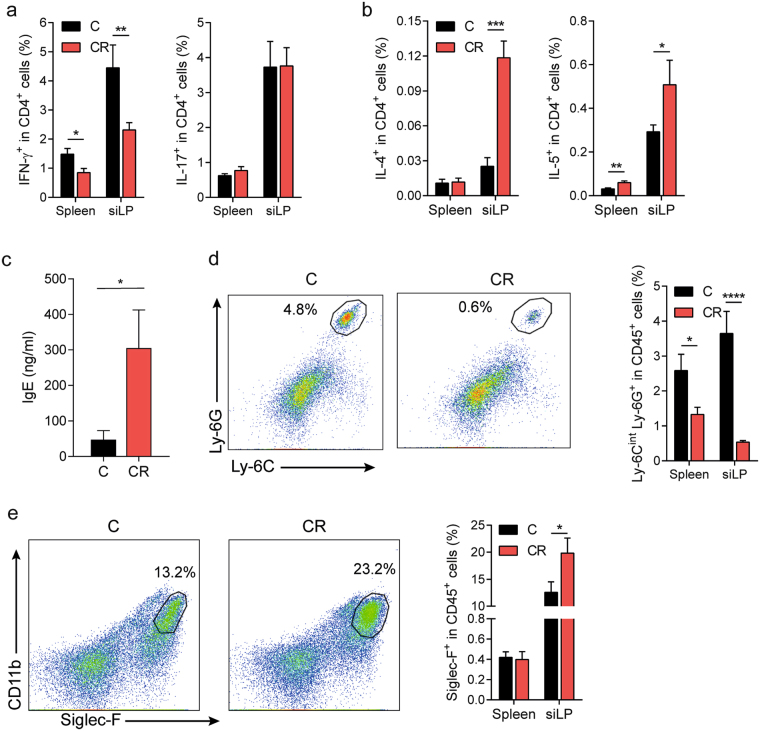Figure 2.
High dietary cellulose content shifts the balance from a pro-inflammatory TH1 towards an anti-inflammatory TH2 cell response. (a) Impaired TH1 immune response in OSE mice on CR diet. Frequencies of IFN-γ- and IL-17-producing T cells from the indicated organs of mice fed control (C) or CR diet are displayed. siLP, small intestinal lamina propria. n = 9–12 mice per group. Data were pooled from 3 independent experiments. **P < 0.01; *P < 0.05 (Mann-Whitney U test). (b) Enhanced TH2 cell responses in CR diet-fed OSE mice. Shown are the frequencies of IL-4- and IL-5-producing T cells from the indicated organs of mice fed control (C) or CR diet. n = 8–9 mice per group. Data were pooled from 2 independent experiments. ***P < 0.001; **P < 0.01; *P < 0.05 (Mann-Whitney U test). (c) Serum IgE levels measured by ELISA. Bars display mean ± s.e.m. n = 10–11 mice per group. Data were pooled from 2 independent experiments. *P < 0.05 (Mann-Whitney U test). (d) Lack of neutrophil recruitment in OSE mice on CR diet. Representative plots of cells from small intestinal lamina propria (siLP) of OSE mice raised on control (C) or CR diet. Ly-6CintLy-6G+ populations of CD45+ cells are gated and their percentages are shown. Bar graph depicts frequencies of neutrophils (CD45+Ly-6CintLy-6G+) from the indicated organs of mice fed C or CR diet. n = 7–9 mice per group. Data were pooled from 2 independent experiments. ****P < 0.0001; *P < 0.05 (Mann-Whitney U test). (e) Increased frequencies of eosinophils in CR diet-fed OSE mice. Representative plots of cells from siLP of OSE mice raised on control (C) or CR diet. Siglec-F+ populations of CD45+ cells are gated and their percentages are shown. Bar graph displays frequencies of eosinophils (CD45+Siglec-F+) from the indicated organs of mice fed C or CR diet. n = 8–9 mice per group. Data were pooled from 2 independent experiments. *P < 0.05 (Mann-Whitney U test).

